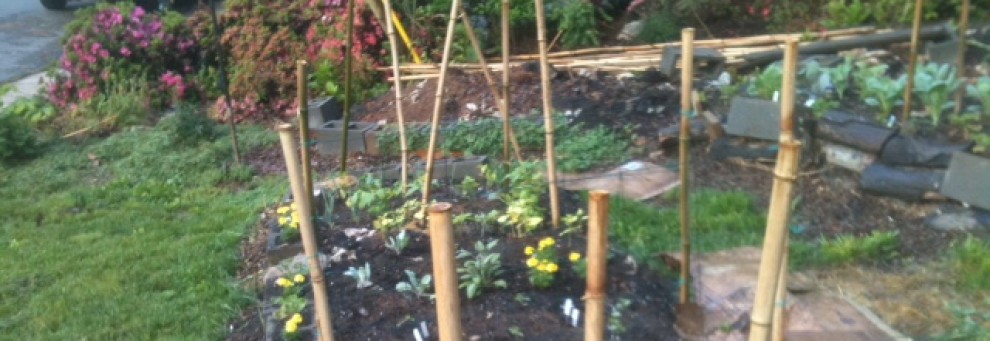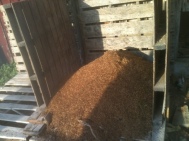The original inspiration for this blog was the garden I was building in a $-rented-$ space in a city garden. I was building my soil, creating beds and starting some compost for future use. All of these items were done for free, but some work was needed to be successful. [and of course I was using tools purchased at retail price- but some of them could have been acquired at thrift stores/ yard sales.]
This post will put forth a list of free items for use in the garden. Your garden and my garden are places for peace ,fun, sweat and food. All of that can be attained with a big checkbook but there is something rewarding about reusing, and repurposing items for beneficial use in the garden .
The first is a free ( inexpensive) technique not an item but it still keeps things cheap. It is called lasagna or sheet gardening. Lasagna gardening starts your garden with NEW SOIL MADE BY layering yard and food waste. No need to break nor till the soil(buy/rent root tiller???) just take a little time ,plan ahead and build new soft soil. Make your new soil where you want your garden to be. This is free if all of the material built into the layers is also free(see below). If this is done in the fall the soil will be ready to,plant in the spring and if started in spring some good topsoil or compost can be added to the lop layer as seeds or seedlings are planted. Lasagna Garden HOW TO: latest of cardboard or newsprint(15-20 sheets) on the bottom ,on top of the old grass. The alternate layers of grass clippings, leaves, compost, manure. Shredded wood chips can also be built into the layers.
GRASS CLIPPINGS-
If you have a yard , you have a gardeners gold mine with all of the grass clippings you will generate spring to fall. These can be used in the lasagna garden, added to compost pile/container and used in the growing garden as a weed barrier that eventually breaks down and keeps the soil developing. If you don’t have a yard of green you can collect bags of cut grass around the community . Do this by driving around or do a search online for bagged grass ( see FREECYCLE for,your community).
LEAVES –
These can also added directly to the garden as weed barrier but in many areas th leaves fall as the garden is finishing for the season. They can be added as fall-winter cover , shredded and added to compost pile or bagged and set aside to,creat leaf mold for next springs garden.
If you do not have trees and leaves you may be able to find them from friends, or others in the community and in many communities leaves are collected and piled in a central location for local citizens to use.
WOOD CHIPS/shredded wood mulch-
The wood can be used as weed barrier or as layers in the lasagna garden. they can also be added to the compost pile sparingly. Much like leaves and grass clippings when added to garden as weed barrier they will eventually break down in to the soil.
Most folks will need to get wood chips and shredded wood mulch as few have the wood/trees AND equipment to chop them. Many communities that collect leaves and make them available also collect downed trees and branches AND Christmas trees and shred in a central location available to the community.
COFFEE GROUNDS-
Coffee grounds make a great addition to the compost pile, garden soil and directly for acid loving plants in the garden and yard. When building a lasagna/sheet garden-coffee grounds area a addition . Worked into the soil grounds loosen the soil and break down leaving it nourished.
They may also be spread under acid loving plants like azaleas and even broadcast out on the lawn.
If you drink coffee you will generate some supply but real volume can be found at most local coffee shops and many locations of large chain coffee shops. Some places bag them for you and others ask you to bring buckets.
COMPOSTED KITCHEN SCRAPS-
If we eat any fruit or vegetables we will generate peels and scraps that can be composted for use in the garden. The scraps eggshells plus fruit and veggie only, no other animal based scraps ( meat , fat or bones).
They can be collected in an airtight table top container or the freezer until taken outside to the composting area or tool. The compost is usable after 3-9 months , depending on the method used.
Summary list of Cheapskate supplies:
1.Lasagna gardening
2. Grass clippings
3. Leaves
4. Shredded wood/chips
5. Coffee grounds
6. Composted kitchen scraps
@martyroddy
















